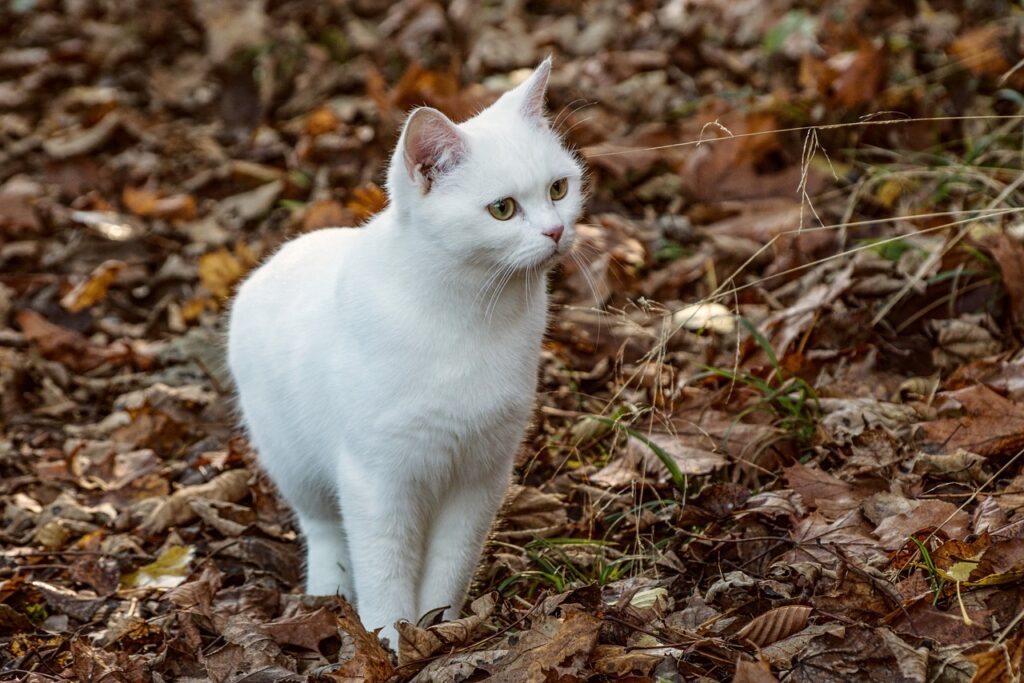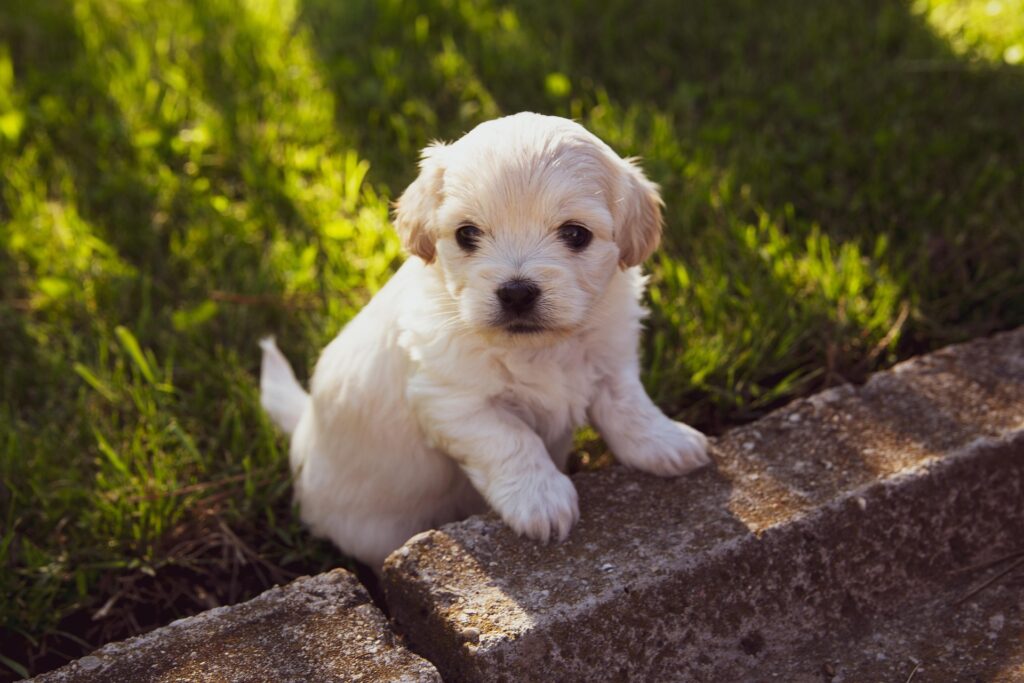While cat poop may not be your favorite topic, its color tells you a lot about your cat’s well-being. White poop could mean parasites, dietary problems, or even liver trouble.
This guide breaks down what white cat poop really means, what causes it, and when to see the vet. Keep reading—your cat’s health could depend on it.
TABLE OF CONTENT
1. What Does Healthy Cat Poop Look Like?
2. Understanding Cat Poop Colors
3. What Causes White Poop in Cats?
4. Texture Matters: What the Consistency Tells You
5. White Poop in Kittens: Special Considerations
6. How Often Should Cats Poop?
7. When to Worry: Red Flags That Require a Vat
8.FAQS
1. Is white poop in cats ever normal?
2. Can diet cause white cat poop?
3. Should I worry if my kitten has white poop?
4. What does white poop with mucus mean?
5. Can parasites cause white poop in cats?
9.Conclusion
2. Understanding Cat Poop Colors

The color of your cat’s poop can reveal a lot about their internal health. While brown is the normal, healthy shade, any changes—especially white—should be taken seriously. Here’s what different colors can mean:
Brown Poop: Normal
Healthy cat poop is medium to dark brown. It should be firm but not too hard, and it typically has a mild odor. Brown means the digestive process is working properly and bile is being released normally.
Black Poop: Possible Bleeding
Black, tarry stool often indicates digested blood from the upper gastrointestinal (GI) tract. It could signal ulcers, internal bleeding, or more severe conditions. This requires urgent veterinary care.
Yellow Poop: Liver or GI Issues
Yellow stool may point to a rapid transit time through the intestines or liver dysfunction. It can also be caused by infections, parasites, or food intolerances.
Grey Poop: Fat Malabsorption
Gray or clay-colored stool is uncommon and may suggest problems with fat digestion, often related to liver, bile duct, or pancreatic issues. It needs medical attention.
White Poop: Warning Sign
White poop is abnormal and usually linked to one of the following:
- Excessive calcium from diets high in bone (common in raw feeding)
- Lack of bile, possibly from a liver or gallbladder disorder
- Parasites, such as tapeworm segments appearing as white flecks
- Severe digestive issues, like pancreatic insufficiency
White poop is often dry, chalky, or crumbly. If it persists or is paired with other symptoms (vomiting, lethargy, appetite loss), call your vet promptly.
Why Color Matters
Poop color reflects bile production, digestion speed, and potential internal issues. A one-time change might not be urgent, but repeated abnormalities should not be ignored. White poop is among the rarest and most concerning signs—spotting it early can prevent serious health problems.
3. What Causes White Poop in Cats?
White poop in cats is never normal. While rare, it’s often a red flag pointing to an underlying health issue. Understanding the possible causes can help you act quickly and protect your cat’s health.
1. Excessive Calcium from Raw Diets
Many cat owners feed raw diets that include crushed bones. While bones provide calcium, too much can lead to chalky, white stools. This type of poop is usually dry and crumbly.
2. Bile Duct Obstruction or Liver Disease
Bile gives poop its brown color. If your cat’s liver or bile ducts aren’t working properly, bile may not reach the intestines—resulting in pale or white-colored poop.
Common causes:
- Liver disease
- Gallbladder issues
- Bile duct blockage (from inflammation, stones, or tumors)
You may also notice yellowing of the eyes or gums (jaundice), vomiting, or loss of appetite.
3. Intestinal Parasites
Certain parasites—especially tapeworms—can appear as small, white, rice-like segments in the stool. While not actual white poop, this can be confused with it.
These parasites can cause:
- Digestive upset
- Weight loss
- Itchy rear end (your cat may scoot across the floor)
4. Exocrine Pancreatic Insufficiency (EPI)
EPI is a condition where the pancreas doesn’t produce enough digestive enzymes. As a result, undigested fat passes into the stool, making it pale, greasy, and foul-smelling.
Other signs include:
- Increased hunger
- Weight loss
- Loose, smelly poop
5. Medication Side Effects
Some medications—especially antibiotics or antacids—can alter bile flow or disrupt digestion, leading to pale or whitish stools. If the change occurs after starting a new drug, consult your vet.
6. Foreign Object or Digestive Blockage
If a cat swallows a non-digestible item (like plastic or string), it can cause intestinal obstruction, reducing bile flow and affecting poop color. You may also see:
- Straining to poop
- Painful abdomen
- Vomiting
When to Be Concerned
If your cat’s poop is consistently white or pale, or if they show other symptoms (vomiting, lethargy, yellow gums, not eating), do not wait. These signs suggest a deeper issue that requires a vet’s diagnosis and treatment.
4. Texture Matters: What the Consistency Tells You

When examining your cat’s poop, color is important—but so is texture. The consistency of your cat’s stool provides valuable clues about their digestive health. White poop that is either too hard or too soft can point to specific issues.
1. Hard, Chalky White Poop
If your cat’s poop is dry, hard, and chalky white, it’s often linked to:
- Too much calcium, especially from bone-heavy raw diets
- Dehydration, which can dry out the stool
- Constipation, making the stool difficult to pass
This type of stool may cause your cat to strain or skip litter box visits altogether. Long-term constipation can lead to megacolon, a serious condition requiring medical care.
2. Greasy or Oily White Poop
White poop that appears shiny, greasy, or soft may indicate:
- Exocrine Pancreatic Insufficiency (EPI): A condition where the pancreas doesn’t release enough enzymes, causing undigested fat to pass through
- Fat malabsorption, often related to liver or gallbladder issues
This poop may also have a strong, foul odor and cause your cat to lose weight despite a healthy appetite.
3. Mucus-Coated White Poop
If your cat’s poop looks white and slimy, it could be covered in mucus. This may signal:
- Intestinal inflammation
- Irritable bowel syndrome (IBS)
- Parasitic infections
Mucus in stool can be a response to irritation or infection in the colon. It’s often seen alongside diarrhea, soft stool, or inconsistent litter box habits.
4. Soft or Runny White Stool
Loose or watery white poop is a red flag. It may suggest:
- Severe digestive upset
- Poor nutrient absorption
- Liver or bile duct problems
This type of poop is especially dangerous in kittens or older cats, as it can quickly lead to dehydration and nutrient loss.
What to Watch For
| Texture | Possible Cause | Action |
| Hard, chalky | Excess calcium, dehydration | Adjust diet, increase water |
| Greasy, soft | Pancreatic or liver issues | See vet immediately |
| Slimy, mucus-coated | Inflammation, parasites | Get stool tested |
| Watery, pale | Malabsorption, liver trouble | Urgent vet care |
Quick Tip: If you’re unsure about the texture, collect a fresh sample and bring it to your vet. Photos can also help document changes over time.
5. White Poop in Kittens: Special Considerations
White poop in kittens is especially concerning. Unlike adult cats, kittens have developing digestive systems and weaker immune defenses. Even a minor issue can quickly become serious. Here’s what to know if your kitten is passing white or pale stool.
1. Immature Digestive System
Kittens have sensitive stomachs. During their early weeks, their digestive system is still adjusting to:
- Milk or formula
- Transition to solid food
- Changes in diet or feeding routine
White or light-colored stool might indicate incomplete digestion. This is especially common when switching foods too quickly or using poor-quality kitten formula.
2. Parasites Are Common
Kittens are highly susceptible to intestinal parasites, especially if they come from shelters, breeders, or outdoors.
Tapeworms or roundworms can cause:
- White specks in stool
- Pale or slimy poop
- Bloating and poor growth
If your kitten’s poop looks unusual, a stool test can quickly confirm the presence of worms.
3. Infections and Illnesses
White or greyish poop may also be a sign of:
- Liver dysfunction (congenital or acquired)
- Viral or bacterial infections like feline panleukopenia or rotavirus
- Bile flow issues, preventing normal digestion
These conditions can progress fast in kittens and may include symptoms like:
- Lethargy
- Vomiting
- Refusal to eat
- Dehydration
4. Improper Diet or Formula
Feeding kittens cow’s milk or the wrong formula can upset their stomachs. It may result in pale, loose stools or chalky poop. Always use vet-approved kitten milk replacer if bottle-feeding, and transition to wet kitten food gradually.
5. Red Flags to Act On Immediately
If your kitten shows any of the following along with white poop, contact your vet right away:
- Weakness or constant sleeping
- Diarrhea lasting over 24 hours
- No appetite
- Vomiting
- Difficulty passing stool
Kittens can deteriorate quickly if not treated, especially with dehydration or underlying illness.
Bottom Line
White poop in kittens is not normal. While it may be caused by food or parasites, it can also point to something much more serious. Don’t take chances—early vet care can save your kitten’s life and prevent long-term complications.
6. How Often Should Cats Poop?
How often your cat poops is a strong indicator of their digestive health. While there’s a range of what’s considered “normal,” sudden changes in frequency—especially alongside white poop—could be a sign of a problem.
1. Normal Pooping Frequency in Cats
Most healthy adult cats poop once a day. Some may go twice, depending on:
- Diet (wet vs. dry food)
- Hydration levels
- Activity and metabolism
Kittens usually poop more frequently—2 to 3 times daily—especially during the weaning and early eating stages.
2. Factors That Affect Pooping Frequency
Several everyday factors can influence how often your cat goes:
- Diet: High-fiber diets often lead to more frequent poops. Raw or low-residue diets may reduce frequency.
- Water intake: Dehydration can cause infrequent, dry stools.
- Stress: Changes in environment or routine can lead to constipation or diarrhea.
- Exercise level: Active cats tend to have healthier bowel movements.
- Age: Older cats may poop less frequently due to slower digestion or mobility issues.
3. When Less Frequent Poop Is a Concern
If your cat is pooping less than once every 48 hours, especially if stools are hard, chalky, or white, it could indicate:
- Constipation
- Blockages
- Dehydration
- Excessive calcium or bone content in the diet
Chronic constipation can lead to megacolon, a severe and irreversible condition.
4. Frequent Pooping and White Stool
If your cat is pooping more than twice a day and the stool is white, soft, or greasy, it could mean:
- Malabsorption
- Pancreatic insufficiency
- Parasites
- Liver dysfunction
Frequent white poop usually points to poor digestion and requires a vet check.
5. What About Kittens?
Kittens poop more often because they’re:
- Growing rapidly
- Digesting small, frequent meals
- Adjusting to food transitions
If a kitten hasn’t pooped for 24 hours or has persistent white poop, immediate vet care is advised.
Signs to Monitor
| Poop Pattern | Possible Cause | Action |
| Less than once in 2 days | Dehydration, constipation | Vet check |
| More than 2–3 times daily | Malabsorption, diet issue | Adjust food, consult vet |
| No poop at all | Obstruction or illness | Emergency care |
| Irregular with white color | Liver or enzyme problems | Diagnostic tests |
Final Tip: Track the Litter Box
Keep a close eye on your cat’s litter box habits. Sudden changes in frequency, color, or consistency are key signals that something may be wrong—especially if white poop is involved.
7. When to Worry: Red Flags That Require a Vet

White poop in cats is unusual—and often a sign that something isn’t right. While occasional changes in stool can be harmless, persistent white, pale, or chalky stools demand attention. Here are the signs that mean it’s time to stop guessing and call your veterinarian.
1. White or Pale Poop Lasting More Than 24–48 Hours
If your cat passes white poop for more than a day or two, it’s not normal. This may point to:
- Liver disease
- Bile duct obstruction
- Pancreatic insufficiency
- Dietary imbalance (e.g., too much calcium)
White or gray poop means bile is missing, which requires a vet’s diagnosis and treatment.
2. Poop with Mucus, Blood, or Worms
If the white poop is also:
- Coated in mucus
- Streaked with red blood
- Contains white specks or worms
…it could signal:
- Parasitic infections
- Colitis
- Serious intestinal irritation
A stool sample can confirm what’s wrong.
3. Your Cat Is Showing Other Symptoms
If you notice any of the following along with white poop, it’s time to visit the vet:
- Vomiting
- Lethargy
- Loss of appetite
- Weight loss
- Yellowing of gums or eyes (jaundice)
- Difficulty pooping or straining
- Diarrhea lasting more than 24 hours
These signs indicate that a larger systemic issue may be affecting your cat’s liver, pancreas, or intestines.
4. White Poop in Kittens or Senior Cats
Young kittens and older cats are more vulnerable. In these age groups, any abnormal poop color or consistency should be treated as an urgent matter. Kittens can quickly become dehydrated and malnourished; senior cats may be showing signs of chronic illness.
5. Sudden Change After Medication or Diet Switch
White poop appearing after starting a new medication or changing food can indicate a bad reaction. It may be:
- A side effect of the medication
- A nutrient imbalance in a new diet
- Poor digestion due to improper food transition
If symptoms persist, discontinue the food or consult your vet about the medicine.
What the Vet May Do
To diagnose the issue, your vet might:
- Perform a physical exam
- Request a stool sample
- Order blood tests (to assess liver, pancreas, or kidney function)
- Use ultrasound or X-rays to look for blockages or organ problems
Treatment depends on the cause. It might involve deworming, antibiotics, enzyme supplements, or a special diet.
Bottom Line
White poop in cats is more than a strange sight—it’s a symptom. If it lasts, changes in texture, or comes with other warning signs, don’t delay. A quick vet visit could uncover and resolve a serious health issue before it becomes critical.
1. Is white poop in cats ever normal?
No, white poop is not considered normal in cats. It often indicates a lack of bile, which could point to liver or digestive issues. If you notice white or pale poop, consult a veterinarian.
2. Can diet cause white cat poop?
Yes. Diets high in calcium or bone (such as raw diets with too much bone content) can lead to hard, chalky white stools. Always balance your cat’s diet based on vet guidance.
3. Should I worry if my kitten has white poop?
Yes. Kittens are very vulnerable to digestive issues, infections, and parasites. White poop in kittens should be treated as urgent and checked by a vet right away.
4. What does white poop with mucus mean?
Mucus in white stool may indicate intestinal irritation, inflammation, or parasites. It’s often a sign that the colon is struggling and needs medical attention.
5. Can parasites cause white poop in cats?
Parasites themselves don’t usually cause the stool to be white, but white specks (like tapeworm segments) may be visible. Infections may also disrupt digestion and change stool color or texture.
Conclusion
White poop in cats is never something to ignore. While it might seem harmless, it often signals deeper issues like digestive problems, liver disease, or dietary imbalances. Whether it’s a one-time occurrence or a recurring problem, monitoring your cat’s stool color, frequency, and consistency is key to catching health concerns early. If you notice white or pale poop—especially with other symptoms—don’t wait. A quick vet visit can make all the difference in protecting your cat’s health and well-being.

